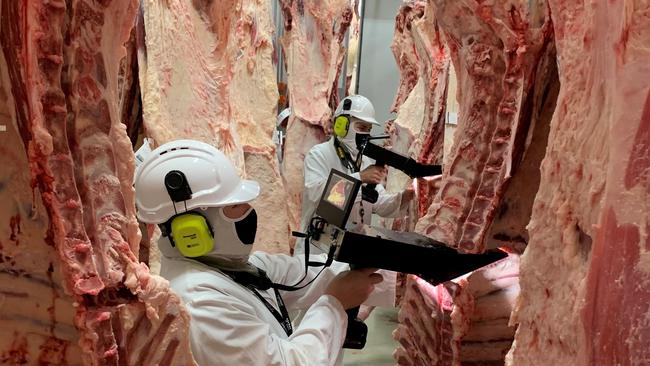Australian beef export figures reveal US push
The beef industry is on track to produce its biggest export volumes yet, as the US dominates volumes. We break down the latest figures.
The United States is dominating Australian beef exports as dwindling supplies and favourable currency puts our beef on the menu.
Year-to-date figures until the end of August show the US has been Australia’s biggest customer, taking 234,976 tonnes from the start of the year or 27.5 per cent of all exports.
Their take has boosted Australian beef exports close to record levels, falling only just behind 2015 for January to August totals.
This calendar year, Australia has exported 853,205 tonnes of beef, compared to 874,000 tonnes in the record breaking year of 2015.
And analysts believe Australia is on track to set a new high when the final figures are done at the end of the year.
Meat and Livestock Australia global market analysts Tim Jackson said US imports for the year were up 69 per cent year on year, in a massive spike in demand.
While most of this was either grass-fed or trim (90CL processing beef), there had also been a lift in grain-fed beef exports in August, up 135 per cent albeit to 1171 tonnes, a small portion of the total 41,000 tonnes sent to the US.
While the overall lift in all imports is significant, Mr Jackson said the US quota still left room for the Australian industry to move.

“Our quota is 435,000 tonnes to the United States, and eight months in, we are at 235,000 tonnes so it shows the capacity to grow still,” he said.
Away from the volume going to the US, Japan was also a strong force in Australian beef exports in year to date numbers, up 31 per cent year-on-year to 179,883 tonnes.
South Korea rounded out the big three buyers, taking 127,472 tonnes of Australian beef to date this year, up 5 per cent on last year.
Grain fed exports year to date are up 19 per cent, at 244,420 tonnes.
On a monthly basis, August beef exports were down on July (which set a record) but came in at 121,797 tonnes.
StoneX Australian livestock and commodities manager Ripley Atkinson said the results showed export markets were working well.
“Despite the continued commentary on challenging trading conditions in certain markets, export numbers tell a different story,” Mr Atkinson said.
And he said it was not only the better known markets that were performing, with year-to-date exports to the Philippines up 57 per cent and Vietnamese exports rising 78 per cent.
“The numbers continue to reinforce diversity in our export markets, and really reaffirm the importance of Asia, outside of China, South Korea and Japan, to the Australian beef market,” he said.




